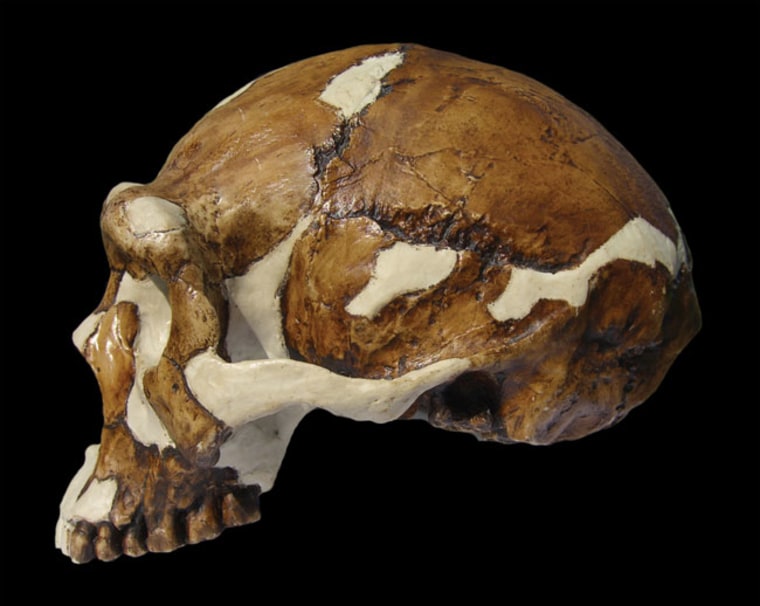"Peking Man," a human ancestor who lived in China between roughly 200,000 and 750,000 years ago, was a woodworking, fire-using, spear-hafting hominid who, mysteriously, liked to drill holes into objects for unknown reasons.
And, yes, these hominids, a form of Homo erectus, appear to have been quite meticulous about their clothing, using stone tools to soften and depress animal hides.
The new discoveries paint a picture of a human ancestor who was more sophisticated than previously believed.
Peking Man was first discovered in 1923 in a cave near the village of Zhoukoudian, close to Beijing (at that time called Peking). During 1941, at the height of World War II, fossils of Peking Man went missing, depriving scientists of valuable information.
Recently, researchers have embarked on a re-excavation of the cave site, searching for artifacts and answers as to how the Peking Man lived. Just as importantly, they engaged in new lab work that includes using powerful microscopes to look at artifacts made by Peking Man to determine how they were used, a process archaeologists called "use-wear" analysis.
On Dec. 15, four of these scientists gathered at Toronto's Royal Ontario Museum to give an update on their most recent findings. Three of the scientists — Xing Gao, Yue Zhang and Shuangquan Zhang — are with the Chinese Academy of Science's Institute of Vertebrate Palaeontology and Palaeoanthropology. The fourth, Chen Shen, is a curator at the Toronto museum and a special member of the academy.
Among their archaeological findings is a 300,000-year-old "activity floor" (as the scientists call it) containing what may be a hearth and fireplace, akin to a prehistoric living room. Analysis is ongoing, and Yue Zhang noted that 3-D scanners are being used to map it. If the results hold up, it may prove once and for all that Peking Man was able to control fire, an important skill given the chilly weather at times in northern China. [The 10 Biggest Mysteries of the First Humans]
Spear discovery
The use-wear analysis of Peking Man's tools yielded several interesting finds. Chen Shen said that analysis of the base of Peking Man's stone tools reveal that the hominid "likely" attached stone points to sticks, creating a sort of spear. It's an important step in human development as it involves putting together two materials, the stone tip and stick, to form a composite tool.
Scientists are still trying to determine the details. For instance, Shen said it is possible that Peking Man was making spears with short sticks. While not as useful for hunting, the short stick would act as "an extension of the tool," and "you can hold it while you are scrapping or engraving," Shen said in an interview with LiveScience. Researchers are also trying to determine whether Peking Man used some form of sticky organic material to aid in the process of hafting a spear.
Another question is how this fits, chronologically, with other recent prehistoric findings. Just last month, scientists working in South Africa reported in the journal Science that another hominid named Homo heidelbergensis was making spears 500,000 years ago (in that case, probably to hunt animals). This leaves researchers wondering whether Peking Man, a different hominid, started making spears at around the same time.
More mysteries
The team also found evidence through the use-wear analysis that Peking Man was working wood (which didn't preserve in the cave) with their stone tools, possibly to turn it into wooden tools.
Perhaps the strangest finding was evidence for "drilling." Shen explained they don't know what the hominids were drilling into, or why, but they were certainly engaging in it with their stone tools. There is no evidence so far that Peking Man made ornaments or what we would consider art.
Finally, the analysis shows that Peking Man had an interest in clothes. "A certain proportion of tools were being used for the working and scraping of hides," Shen said in the interview.
"If they are depressing the hides, if they are softening hides, they can use the hides for their clothes," something no sophisticated hominids would dare live without.
Follow on Twitter . We're also on and .
